Easter traditions across the world
Easter traditions across the world
Easter traditions are similar yet different in various parts of the world. From simple painting of eggs and Easter Parades to the sumptuous Easter meal and lots of chocolate. There is the Smigus-Dyngus (Easter Monday) in Poland when the entire country becomes a huge ground for water fights on the streets… Or the Paskekrim in Norway when the entire country celebrates Easter by reading and watching crime stories… There is a fireworks shows and the Burning of Judas in Greece… And bread arches in Italy…
It is easy to understand the why’s and how’s of these specific Easter traditions, but I was curious about how the age-old Easter traditions came about.
The result of this looking around is this short writeup. I have tried to figure the Easter traditions that I could remember – in case you know of any others, please add on to this list…
The Sunrise Service of Easter
The story is that Mary opened Jesus’s tomb at the crack of dawn on Easter morning to find it empty. It is to honor this occasion that services happen at sunrise. This became a part of Easter traditions, however, only in the mid-18th century.
Lent
Traditionally, the period of Lent meant that people had to fast for 40 days. Nowadays of course folks just give up an indulgence like coffee, chocolate, TV, etc. Now, Lent ends around Easter and hence, by Easter Sunday, people are raring to go at the huge meal and assorted delicacies and sweets. So, the huge focus on food during Easter is probably courtesy the abstinence of Lent…
Again, possibly, eggs were not allowed to be eaten during Lent, so people fought temptation by painting them through Lent and ate them during Easter.
The Timing of “Easter”
“Pesach” is Hebrew for Passover – Early Christians referred to Easter as Pesach. A variation of this word is used in many languages – “Pesach” in France, “Pascua” in Spain and Italy, “Pashke” in Albania and “Pask” in Sweden…
The word “Easter” that we use comes from an Anglo-Saxon goddess called Eostre (Astarte or Oster). The festival of this goddess happened around the Spring Equinox. When the missionaries came into Europe, they found it easier to adopt various elements of the erstwhile Pagan faith into their preaching. This was done to ensure faster and easier acceptance. It happened in India where various rituals were taken into the Christian prayer. Similarly, in the Anglo-Saxon belt, they built the festival of “Pesach” into the festival of Eostre. They did this by incorporating the name, time and symbolism and renamed it Easter.
Stations of the Cross and Passion Plays
Think of a populace that couldn’t read, write or understand the language of the Church – Latin. Now, how do you teach the gospel? The answer was drama and rituals – and hence the practices of Stations of the Cross and Passion Play, to tell the story of the crucifixion and resurrection of Jesus Christ in a simple fashion. By the way, the original Stations of the Cross were a physical Holy Land pilgrimage to the 14 sacred sites related to Jesus’ death and crucifixion. They would recite prayers and songs on the way. This has now been made more doable with walking around the area praying and singing.
The Passion Play, a drama about Christ’s sufferings, became popular after a town in the early 17th century vowed to perform the Passion Play if God would spare the town from the Plague. When the death rate dropped, they started staging the play regularly – thus starting a world-wide trend and another of the Easter traditions.
Lamb vs. Ham in the meal as per Easter traditions
Among the early Jews, lambs were sacrificed to God as offerings, especially during Passover. When Jesus died during Passover, he was considered the ultimate sacrifice for sin – the “lamb of God”. Hence a symbol for Christians during Easter. Plus, the Jewish Orthodox customs of not eating pork brings forth the importance of lamb in the Easter meal. Another reason could be that post a long winter, lamb would have been one of the first fresh meats available with no other livestock being available.
In other places and cultures, where ham and pork symbolize good luck, the Easter meal is incomplete without ham.
Easter Bunny
A German story goes thus – A poor lady who loved kids, hid bright colored eggs in here garden for kids to find and take. The kids saw a hare hopping by when searching for the eggs and hence they believed the eggs were left for them by the hare.
It could also be from the ancient fertility and spring celebrations. We know how the rabbits are fairly, shall we say, prolific breeders. The birth of bunnies happens in spring. So, in most places, the fields would be literally crawling with baby bunnies. This is why the rabbit came to be a symbol of spring and Easter.
This belief moved across the world through German immigrants. Then commercial interests stepped in to create the chocolate bunny to be a part of the celebration. Another one of the Easter traditions.
Easter Eggs and Baskets
Eggs were a sign of fertility and new life in many ancient cultures – Greek, Egyptian, Indian mysticism, etc. So, it came to be used in religious rituals and in pagan temples. When the early Christian missionaries saw the importance of the eggs in the locals, they started using eggs to describe the story of Christ. It was simple as a story-dissemination tool – they would paint the various Biblical scenes on the eggs, get kids to search for them and when they found the eggs, they had to recite the story painted on the egg… The colors used then were – yellow to symbolize resurrection, blue for love and red for the blood of Christ.
Kids believed that the “Easter Hare” left the eggs and goodies. In Germany, they then began creating small nests of leaves for the bunny to place them. And hence the Easter traditions of preparation and displaying of the “Easter basket”.
Easter Egg Hunts
The Easter egg has associations with the spring festival from before the Christian era. Much later, with the Christian influence, it became symbolic of the tomb from which Jesus was resurrected. The happiness of finding an egg after hunting for it is to remind us of the joy that Mary felt when she found Jesus’s tomb to be empty.
Egg Tapping
During the Easter festival in Poland, Egg Tapping has been prevalent since medieval times. And then it spread across England and further – through wars, which possibly was the most prevalent social and cultural exchange program of the times… 😉
It’s a simple game – two people knock the pointed ends of the eggs together till one cracks and identifies the winner. It goes by various names – egg knocking, egg fighting, egg boxing, egg picking, etc.
Giant Omelet
Easter and eggs. If there are eggs, can an omelet be far behind in France. Apparently, Napoleon Bonaparte was passing through Bessieres in France with his army when he ate the local version of the Omelet. He loved it and asked the villagers to make one to feed his entire army. This added another one to the Easter traditions in this place. The locals make a 14-feet omelet with 15,000 eggs!
Easter Candy
The real prize in the Easter egg hunt is the candy. Exchanging chocolates and other sweets started in the mid-19th century in Europe when mass-production of sweets became possible in fancy shapes. Must have had something to do with Cadbury eggs making its debut in 1875, methinks. Again jelly beans, possibly because they look like eggs… And eating a chocolate Easter bunny? Did you know, most folks start with the ears… How about you? 😉
Easter Bonnets and Parades
Any celebration is time for showing off – new dresses especially. For long, Easter has been an occasion to dress well to go to Church in honor of the resurrected Christ. Then commerce took over and started hawking fancy bonnets and suits. From this it was small step to heading to the streets in formal parades to show off the new finery. Thus was born the Parade, as another one of the Easter traditions.
Remember the hit 1948 film “Easter Parade” with Fred Astaire and Judy Garland singing “In your Easter bonnet, with all the frills upon it/You’ll be the grandest lady in the Easter parade”? Even now, in Manhattan, the Easter Parade blocks off a part of the busy 5th Avenue for traffic.
Hot Cross Buns
The ancient Egyptians, Romans and Greeks served simple round buns decorated with crosses in honor of goddesses. In England, the belief was that cross buns baked on Good Friday would never grow moldy. They kept these in houses, ships and grain stocks as good luck charms. Now, they are merely symbols of the cross and a sweet part of the Easter meal.
The White House Easter Egg Roll
Children had celebrated Easter with games on Capitol Hill till President Ulysses Grant banned it. Then in 1878 President Rutherford B. Hayes opened the White House lawn for resuming this. This tradition still continues with the Egg Roll, Easter stations and an Easter Egg hunt.
There is a belief that egg rolling is symbolic of the stone blocking Jesus’ tomb being rolled away and hence the discovery of the Resurrection.
Kite Flying
Once, a teacher explained Jesus’s Ascension to heaven using the example of high-flying kites. This was in the British island territory of Bermuda. Now, Bermudians head outdoors to fly colorful homemade kites to commemorate the Resurrection and Ascension. This is quite like the Sankranti celebrations in parts of India.
Explosion of the Cart
Scoppio del Carro (meaning “explosion of the cart”) is another among the interesting Easter traditions. This is to pray for a good harvest. This has been around for the last 350 years in Florence. They parade a cart full of fireworks through the streets on Easter Mass. It stops outside the Duomo Cathedral. The Archbishop of Florence then lights a fuse setting off a fireworks display.
Easter Lilies
The lily, a Japanese flower, moved across the World during World War I and quickly became the unofficial flower of Easter celebrations. White Easter Lilies are common decorations in Churches and homes around Easter and symbolize the purity of Christ to Christians, with their flowering being symbolic of the Resurrection of Christ.
Celebrations, legends and history are always interesting. The ancient Indian epic of Ramayana is one such. To read about and travel along the trail mentioned in the epic (in modern-day Sri Lanka), read this https://beyonder.travel/asia/srilanka/the-ramayana-and-the-ramayana-trail-in-sri-lanka-travel-thoughts/
To check out other interesting places to visit and experience, click here https://beyonder.travel



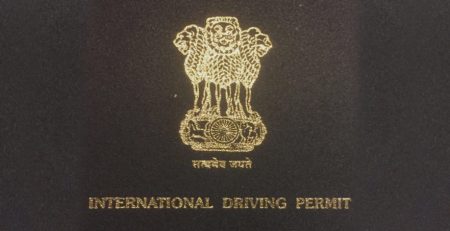
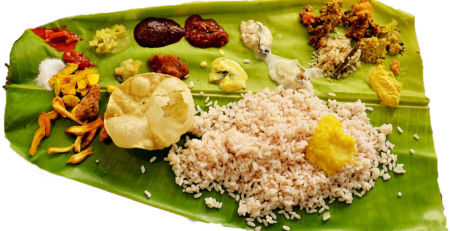
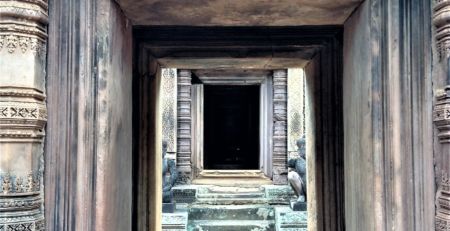



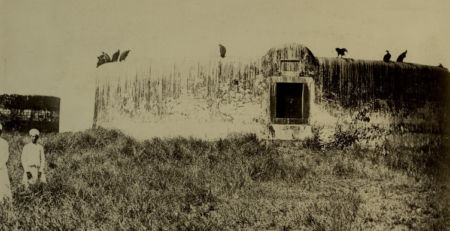
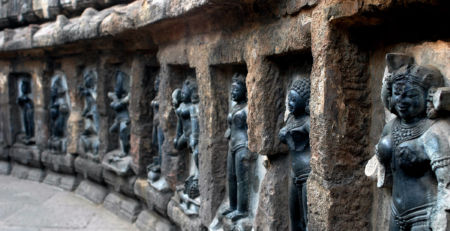

Leave a Reply